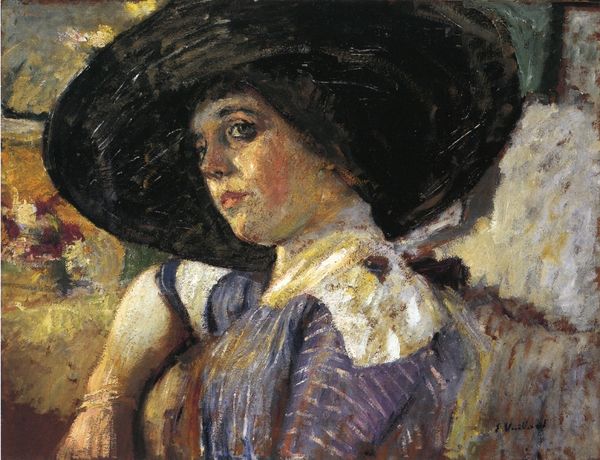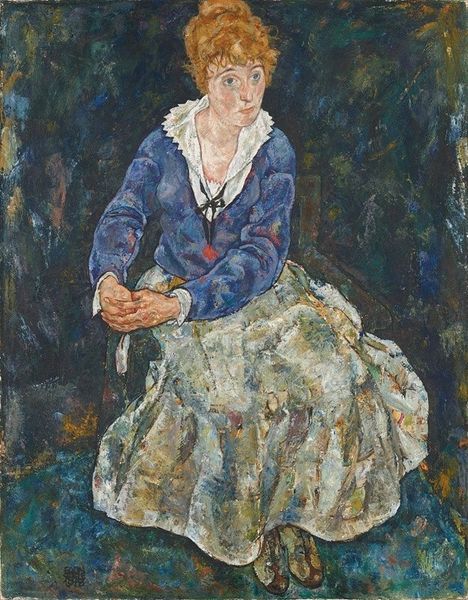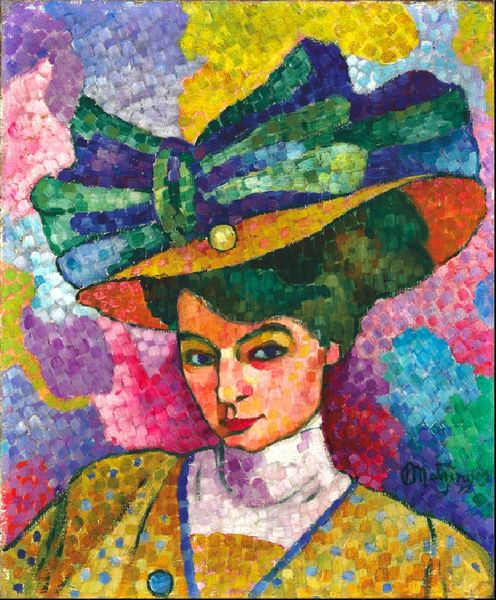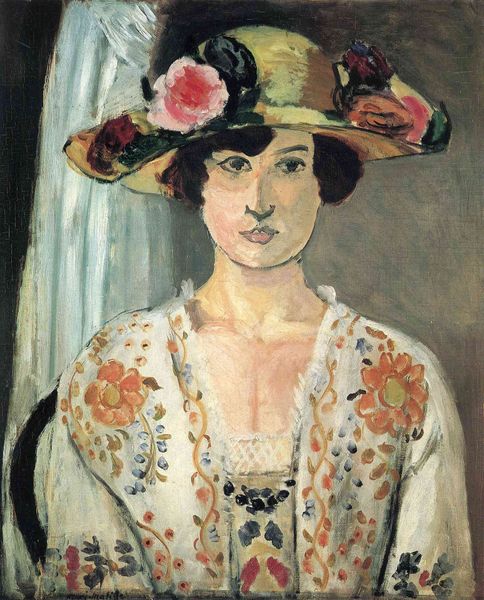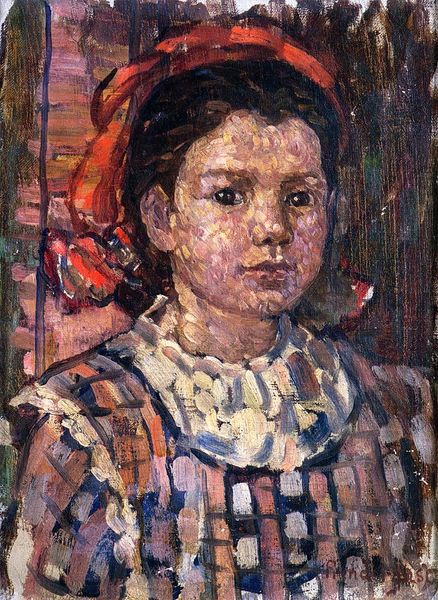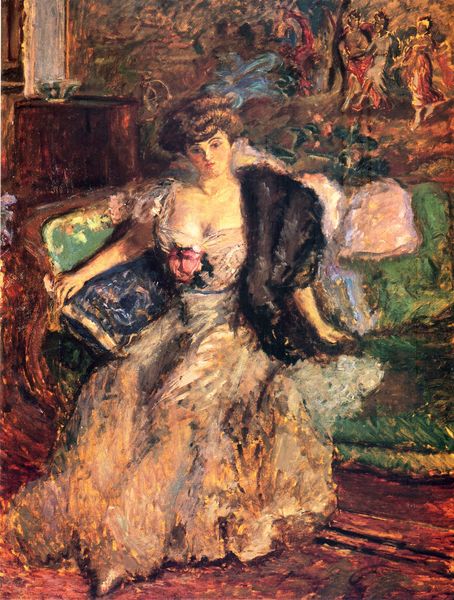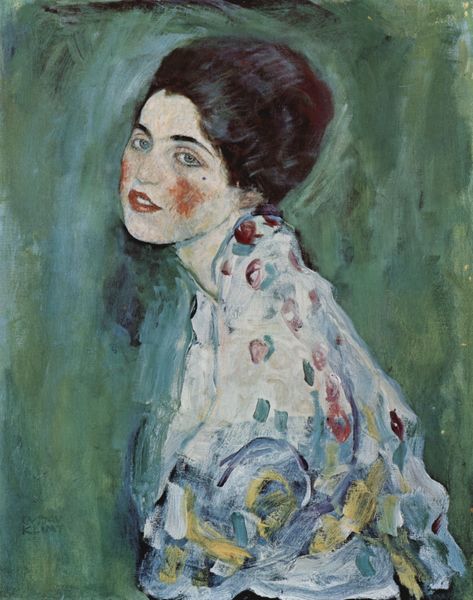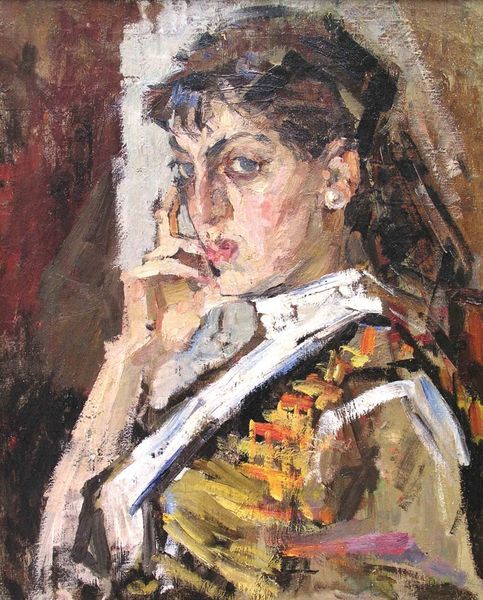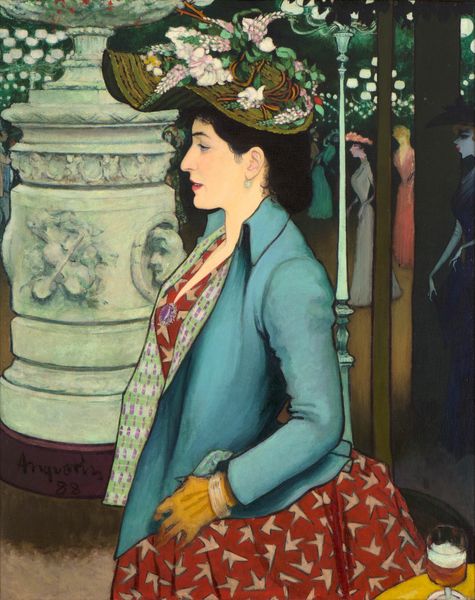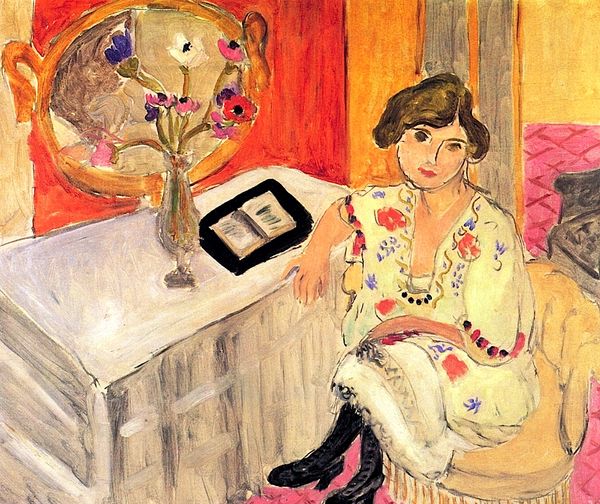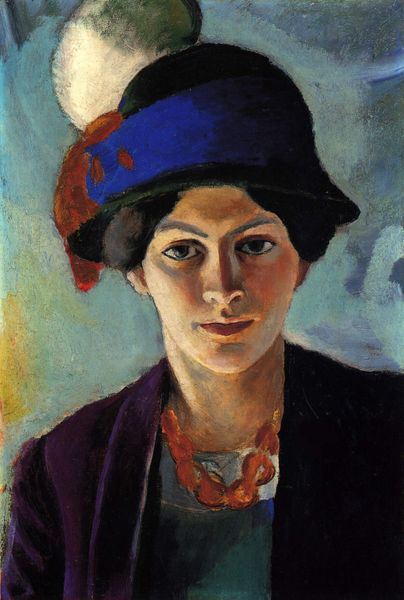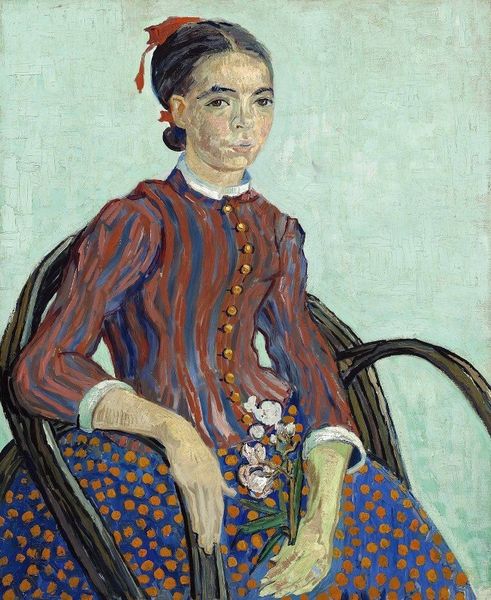
Dimensions: 72.39 x 80.01 cm
Copyright: Public domain
Editor: Here we have Maurice Prendergast's "Le Rouge Portrait of Miss Edith King," created in 1913 using oil paint. It strikes me as a very intimate portrayal; almost as if we're intruding on a private moment. What underlying stories can you unravel from this piece? Curator: Considering the portrait's historical context is essential. The early 20th century witnessed shifts in women’s roles. How does Prendergast negotiate the tension between traditional ideals and the evolving image of women through his portrayal of Miss King? Editor: That's a really interesting point! I guess I was mostly focusing on the impressionistic brushwork and color. Curator: Absolutely, the impasto technique, the visible brushstrokes, the vivid colors -- they all contribute to a sensory experience, but beyond the formal elements, think about how identity and societal expectations played out, particularly for women. The sitter’s attire and relaxed posture are also important; are they representative or contradictory for women in that era? Editor: So, by looking at these details, we can ask broader questions about societal structures? Curator: Exactly! And how someone's portrait can perpetuate those ideas or disrupt them, in both subtle and powerful ways. Does the artwork reinforce class structure through a wealthy woman’s portrayal, or challenge those notions through alternative symbols or aesthetics? Editor: Wow, I never thought of portraits as having a political element! I just considered it to be about one person at one time. Thank you for the new way to see beyond face value! Curator: Indeed, looking at Prendergast through this lens expands our understanding and enriches the conversation.
Comments
No comments
Be the first to comment and join the conversation on the ultimate creative platform.
